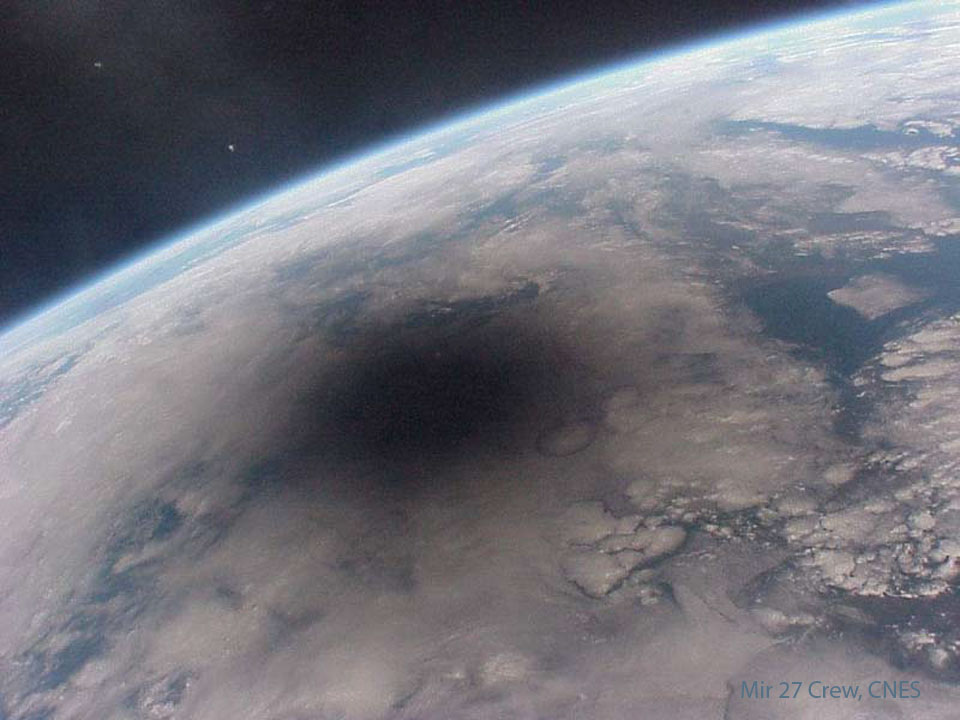2024年3月24日
Looking Back at an Eclipsed Earth
Image Credit: Mir 27 Crew; Copyright: CNES
Explanation: Here is what the Earth looks like during a solar eclipse. The shadow of the Moon can be seen darkening part of Earth. This shadow moved across the Earth at nearly 2000 kilometers per hour. Only observers near the center of the dark circle see a total solar eclipse – others see a partial eclipse where only part of the Sun appears blocked by the Moon. This spectacular picture of the 1999 August 11 solar eclipse was one of the last ever taken from the Mir space station. The two bright spots that appear on the upper left are thought to be Jupiter and Saturn. Mir was deorbited in a controlled re-entry in 2001. A new solar eclipse will occur over North America in about two weeks.
Tomorrow’s picture: open see
日全食时的地球
影像提供: Mir 27 Crew; 影像版权: CNES
说明: 这是日食期间的地球景观。月球的暗影会使部份地球表面变暗,而月影以每小时接近2000公里的速度,扫过地球。只有在圆形暗影中心附近的观察者,才能看到日全食,其他区域的人,则看见了部分太阳被月亮遮住的日偏食。这张精彩的照片摄于1999年8月11日,时值日食发生之时,而它是和平号太空站拍摄的最末批照片之一。影像左上角的二个亮点,咸认为是木星与土星。这座太空站于2001年接到脱离轨道、受控重返地球大气的指令。再过大约2星期,北美洲可见到另一例新日食。
明日的图片: open see




Pingback: 三尖峰后方的银河 – WERLS-树莓派 raspberrypi
Pingback: 三尖峰后方的银河 – NASA中文
Pingback: 日食的七步诗 – NASA中文
Pingback: 战神3号的著落点: 再访火星人 – NASA中文